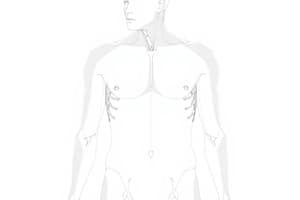Podcast
Questions and Answers
What condition results from excessive ventilation and leads to low levels of CO2 in the blood?
What condition results from excessive ventilation and leads to low levels of CO2 in the blood?
- Respiratory acidosis
- Hypoxemia
- Hypocapnia (correct)
- Hypercapnia
Respiratory acidosis results from a decrease in CO2 levels in the arterial blood.
Respiratory acidosis results from a decrease in CO2 levels in the arterial blood.
False (B)
What is the physiological effect of hypercapnia on blood pH?
What is the physiological effect of hypercapnia on blood pH?
It decreases the pH of the blood.
Hypoventilation leads to a build-up of _______, causing hypercapnia.
Hypoventilation leads to a build-up of _______, causing hypercapnia.
Match the following types of hypoxia with their descriptions:
Match the following types of hypoxia with their descriptions:
What is the primary cause of anoxic hypoxia?
What is the primary cause of anoxic hypoxia?
Anaemic hypoxia is characterized by an inability of blood to carry oxygen to tissues fast enough.
Anaemic hypoxia is characterized by an inability of blood to carry oxygen to tissues fast enough.
What condition can result from breathing pure oxygen at high partial pressures?
What condition can result from breathing pure oxygen at high partial pressures?
_________ hypoxia is caused by cyanide poisoning, which blocks the metabolic activities of cells.
_________ hypoxia is caused by cyanide poisoning, which blocks the metabolic activities of cells.
Which of the following is NOT a cause of hypoxia?
Which of the following is NOT a cause of hypoxia?
Symptoms of hypoxia include cyanosis and tissue necrosis.
Symptoms of hypoxia include cyanosis and tissue necrosis.
List one type of hypoxia characterized by circulatory blockages.
List one type of hypoxia characterized by circulatory blockages.
Match the type of hypoxia with its description.
Match the type of hypoxia with its description.
Flashcards are hidden until you start studying
Study Notes
Respiratory deficiencies
- The composition of the air changes as it travels to the alveoli, with an increase in water content and carbon dioxide (CO2), and a decrease in oxygen (O2).
- Oxygen toxicity can occur when breathing pure O2 at high pressure, leading to lung damage, free radical formation, and tissue death.
- Hypoxia, low oxygen levels in tissues and blood, can be caused by high altitudes, drowning, lung diseases, carbon monoxide poisoning, and anemia.
Types of Hypoxia
- Anoxic hypoxia - insufficient oxygen exchange in the lungs due to suffocation or alveolar damage.
- Anemic hypoxia - low amounts of functional hemoglobin in the blood due to hemorrhage, anemia, or carbon monoxide poisoning.
- Stagnant hypoxia - slow delivery of oxygen to tissues due to heart failure or circulatory blockages.
- Histotoxic hypoxia - adequate oxygen delivery, but tissues cannot utilize it properly, often due to cyanide poisoning.
Hyperventilation
- Excessive ventilation leads to hyperventilation and hypocapnia (low CO2 levels).
- Hyperventilation causes an increase in blood pH, triggering respiratory alkalosis.
- Chemoreceptors respond by lowering respiratory rate, restoring normal CO2 levels.
Hypoventilation
- Hypoventilation leads to hypercapnia (high CO2 levels) and an increase in blood acidity.
- Chemoreceptors stimulate the respiratory center to increase breathing rate and depth to restore homeostasis.
Respiratory Acidosis
- Accumulation of CO2 in arterial blood generates excess H+ ions, lowering blood pH.
- Causes include reduced gas exchange (pneumonia, emphysema), shallow breathing, and brainstem injuries.
Respiratory Alkalosis
- CO2 is eliminated faster than it can be produced, reducing H+ ions and increasing blood pH.
- Causes include hyperventilation and brain tumors or damage.
Studying That Suits You
Use AI to generate personalized quizzes and flashcards to suit your learning preferences.




